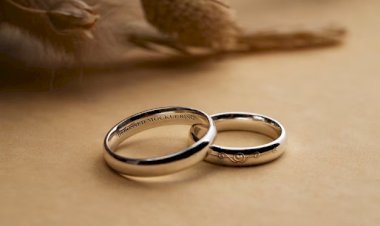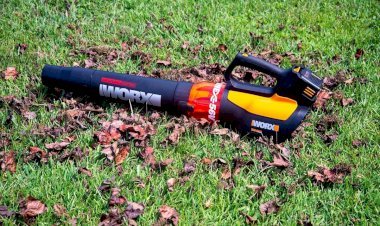Honey Badger Gun 2025: Features, Price & Legal Guide
Discover the Honey Badger gun in 2025 — specs, reviews, price, legality, and why it’s one of the most popular compact rifles in .300 Blackout today.
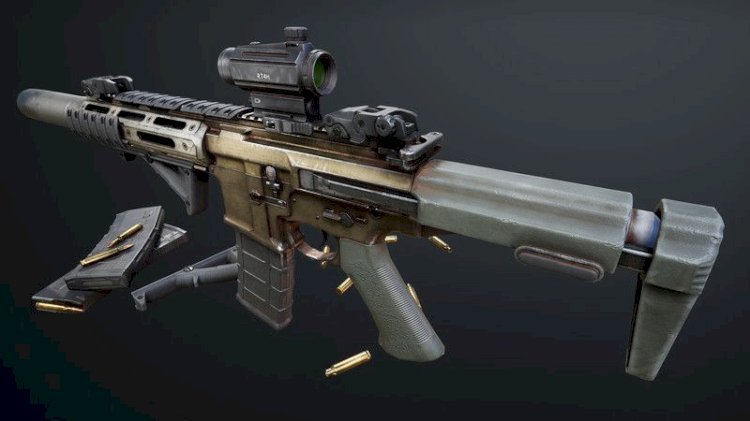
The Honey Badger gun has become one of the most talked-about firearms of the past decade. Originally designed for special operations units seeking a quiet, compact replacement for the MP5-SD, the Honey Badger has since become a staple of firearm culture and a premium choice for civilian shooters. Built around the .300 AAC Blackout cartridge, it is lightweight, maneuverable, and engineered with suppression in mind. In 2025, the Honey Badger continues to stand out for its design, performance, and the ongoing legal debates surrounding it.
Origins and Development

Image source: bigcommerce.com
The Honey Badger was first developed by Kevin Brittingham at Advanced Armament Corporation (AAC). Special operations teams needed a weapon that delivered the punch of a rifle while remaining as compact and quiet as a suppressed submachine gun. The result was a short-barreled AR-pattern firearm chambered in .300 BLK, a caliber that excels in both subsonic and supersonic loads.
After Brittingham left AAC, he founded Q, LLC and revived the project. Q refined the Honey Badger’s ergonomics, machining, and gas system, bringing it to the civilian market. Today’s Honey Badger is true to the original mission: compact, lightweight, and optimized for suppression.
Features and Specifications
Image source: gstatic.com
Two main versions of the Honey Badger are offered: the SBR (Short-Barreled Rifle) and the SD (Integrally Suppressed).
| Feature | Honey Badger SBR | Honey Badger SD |
|---|---|---|
| Caliber | .300 Blackout | .300 Blackout |
| Barrel | 7" stainless, 1:5 twist | 7" stainless, 1:5 twist |
| Gas System | Pistol-length, adjustable | Pistol-length, adjustable |
| Weight | ~4.5 lbs | ~5.5 lbs |
| Length | 20–25 in | 26–31 in |
| Stock | 2-position PDW collapsible | 2-position PDW collapsible |
| Finish | Clear-coat anodized | Clear-coat anodized |
| NFA Stamps | 1 (SBR) | 2 (SBR + suppressor) |
| Price (2025) | $3,150 MSRP | $3,399–$3,675 dealer price |
The SBR version is compact and light, designed to be used with external suppressors. The SD, however, integrates a proprietary Q suppressor into the system. Q does not sell this suppressor separately, meaning the SD must be purchased as a complete package. The SD also uses a modified recoil system: a longer recoil spring extends into a shortened receiver extension, which helps keep the firearm compact without sacrificing function.
Shooting Experience and Performance

Image source: ytimg.com
The Honey Badger is widely praised for its smooth shooting characteristics. With subsonic .300 BLK, especially in the SD model, it is exceptionally quiet—many reviewers describe it as “MP5SD quiet.” Heavier subsonic rounds in the 115–220 grain range stabilize well in the 7-inch barrel thanks to the fast 1:5 twist. Supersonic ammunition adds range and energy while keeping recoil manageable.
The rifle’s light weight and collapsible PDW stock make it extremely easy to handle in confined spaces, while the adjustable gas system ensures reliable cycling in both suppressed and unsuppressed configurations. Owners often note its premium machining, improved finish quality, and refined ergonomics in newer 2025 production runs. The trade-offs are cost, availability, and the paperwork associated with NFA ownership.
Why It’s Popular in 2025
Image source: gstatic.com
The Honey Badger is popular for both practical and cultural reasons. From a performance standpoint, it is one of the lightest and most suppression-ready platforms available. Its branding, inspired by the fearless honey badger animal, has helped it become a cult favorite in online communities, gun culture, and even meme culture. Combined with its history as a special operations project, this backstory makes the Honey Badger more than just a rifle—it’s an icon.
Read Also: Clip vs Magazine Explained: Common Misconceptions in Firearms Terminology
Legal and Regulatory Updates
Image source: gstatic.com
Like all short-barreled rifles and suppressors, the Honey Badger falls under the National Firearms Act (NFA). The SBR requires one tax stamp, while the SD requires two because it includes both an SBR and a suppressor. Buyers must submit fingerprints, undergo background checks, and wait for NFA approval, which often takes months.
The Honey Badger Pistol, equipped with a stabilizing brace, became the subject of controversy in 2020 when the ATF classified it as an SBR. This led to a Cease and Desist order against Q and years of legal debate. The ATF’s Final Rule 2021R-08F, which sought to reclassify brace-equipped pistols as SBRs, was struck down in court. In 2025, the DOJ dropped its appeal, leaving the rule unenforceable nationwide. While this eases pressure on brace owners, legal uncertainty remains, and state laws may still impose restrictions. For most buyers, the registered SBR or SD remains the safer legal route.
Market Conditions in 2025
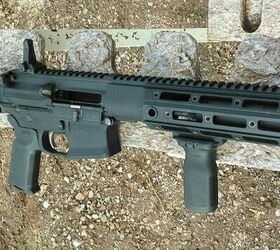
Image source: thefirearmblog.com
Demand for the Honey Badger remains extremely high. Q’s official site warns of extended lead times, and many dealers report that the SD model in particular is difficult to keep in stock. Prices remain steady in the $3,150–$3,700 range, but some resale listings show higher numbers due to scarcity. The combination of regulatory wait times and dealer shortages makes owning a Honey Badger as much about patience as about budget.
Alternatives to the Honey Badger
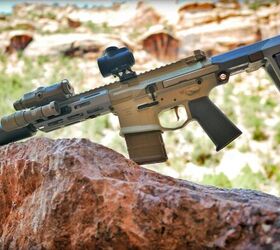
Image source: thefirearmblog.com
Although the Honey Badger is iconic, it is not the only compact .300 BLK rifle available. The SIG MCX Rattler LT offers a piston-driven system, modularity, and a choice of calibers, making it a strong competitor. The Daniel Defense DDM4 PDW is another premium option with Daniel Defense’s reputation for quality. While these rifles are excellent in their own right, the Honey Badger distinguishes itself through its lighter weight, purpose-built suppressor integration, and unique backstory.
Key Takeaways

Image source: wp.com
-
The Honey Badger SBR remains one of the lightest, most compact .300 BLK rifles available.
-
The Honey Badger SD integrates suppression seamlessly but requires two tax stamps.
-
Legal challenges around brace-equipped pistols have been largely neutralized in 2025, but NFA registration is still required for SBR and SD models.
-
Market demand remains high, with long wait times and limited dealer stock.
Conclusion
The Honey Badger gun is more than just an AR variant—it is a specialized platform designed for stealth, compactness, and high performance in .300 Blackout. In 2025, it continues to be admired for its engineering and cultural significance, even as legal debates and high demand add complexity to ownership. For those willing to navigate the price and regulatory process, the Honey Badger offers one of the most distinctive and capable compact rifles ever produced.
FAQs
1. What is the Honey Badger gun?
It’s a small, lightweight rifle made for quiet shooting with .300 Blackout ammo.
2. Who makes the Honey Badger?
It is made by a company called Q, LLC.
3. What is special about the Honey Badger gun?
It is very light, short, and works best with a suppressor for quiet shots.
4. Is the Honey Badger gun legal?
Yes, but you must follow U.S. gun laws and get NFA approval.
5. How much does the Honey Badger cost?
It usually costs between $3,150 and $3,700.
6. Can civilians own the Honey Badger?
Yes, civilians can own it with the right paperwork and tax stamps.
7. What’s the difference between the Honey Badger SBR and SD?
The SBR is a short rifle, while the SD has a built-in suppressor.


